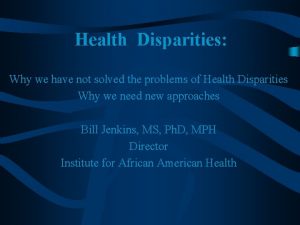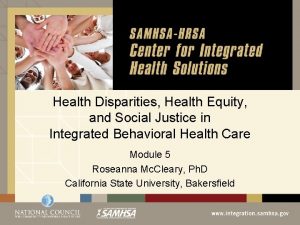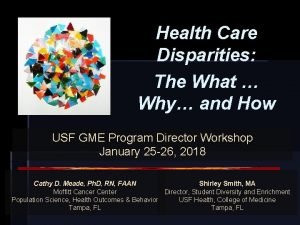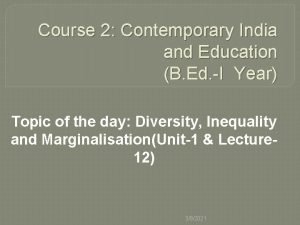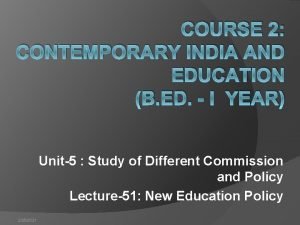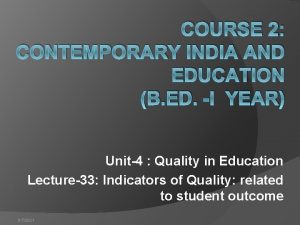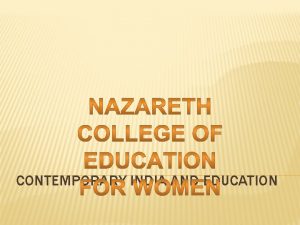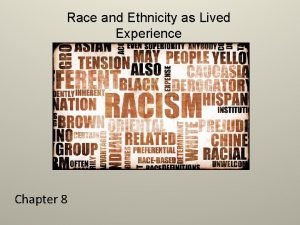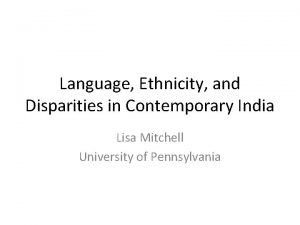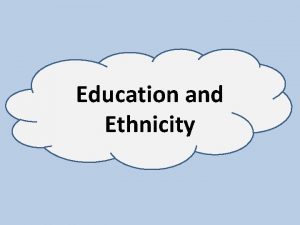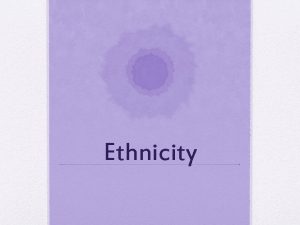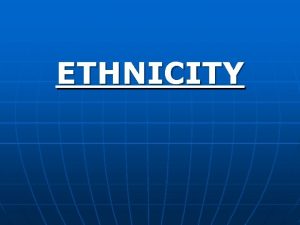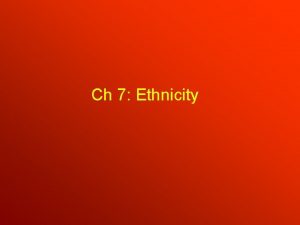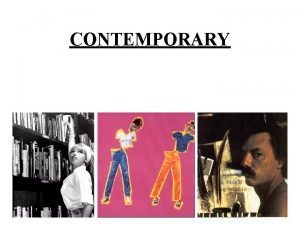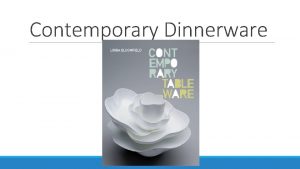Language Ethnicity and Disparities in Contemporary India Lisa










- Slides: 10

Language, Ethnicity, and Disparities in Contemporary India Lisa Mitchell University of Pennsylvania

“Official” Languages of India Table of Schedule Eight Languages in Descending Order of Number of Persons Who Returned the Language as their Mother Tongue (Census of India, 2001) Rank Language Number Percentage of Population 1 Hindi 422, 048, 642 41. 03 2 Bengali 83, 369, 769 8. 11 3 Telugu 74, 002, 856 7. 19 4 Marathi 71, 936, 894 6. 99 5 Tamil 60, 793, 814 5. 91 6 Urdu 51, 536, 111 5. 01 7 Gujarati 46, 091, 617 4. 48 8 Kannada 37, 924, 011 3. 69 9 Malayalam 33, 066, 392 3. 21 10 Oriya 33, 017, 446 3. 21 11 Punjabi 29, 102, 477 2. 83 12 Assamese 13, 168, 484 1. 28 13 Maithili 12, 179, 122 1. 18 14 Santali 6, 469, 600 0. 63 15 Kashmiri 5, 527, 698 0. 54 16 Nepali 2, 871, 749 0. 28 17 Sindhi 2, 535, 485 0. 25 18 Konkani 2, 489, 015 0. 24 19 Dogri 2, 282, 589 0. 22 20 Manipuri* 1, 466, 705 0. 14 21 Bodo 1, 350, 478 0. 13 22 Sanskrit 14, 135 Negligible *Excludes figures of Paomata, Mao-Maram and Purul subdivisions of Senapati district of Manipur for 2001.


Potti Sriramulu (1890 -1952)

Nations with the largest population of Muslims (2010 estimates) Nation Percentage of National Total # of Muslims Population that is Muslim Indonesia 204, 847, 000 Pakistan 178, 097, 000 India 177, 286, 000 Bangladesh 148, 607, 000 Egypt 80, 024, 000 Nigeria 75, 728, 000 88. 1 96. 4 14. 6 90. 4 94. 7 47. 9 Source: The Pew Forum on Religion and Public Life, “The Future of the Global Muslim Population” (January 2011)

Religious Composition of India’s Population (2001 Census Data) Religious Composition (%) Hindus Muslims Christians Sikhs Buddhists Jains Other Religions & Persuasions Religion not stated Total Population 827, 578, 868 138, 188, 240 24, 080, 016 19, 215, 730 7, 955, 207 4, 225, 053 6, 639, 626 727, 588 80. 5 13. 4 2. 3 1. 9 0. 8 0. 4 0. 6 0. 1 1, 028, 610, 328 100. 0

Three Meanings of “Caste” 1. Indian government categories: – SC/ST – Scheduled Castes & Scheduled Tribes • Indian Constitution reserved 22. 5% of government jobs and university seats for these “Depressed Classes” (former “untouchables” and tribal groups) – OBC – Other Backward Classes • Reservations were expanded recently to include an addition 27% of the population, for a total of 49. 5% reserved seats in government institutions (now includes other economically disadvantaged lower caste groups)

Three Meanings of “Caste” 2. jati – Derived from the Sanskrit verb for “born, ” “brought into existence – Often refers to kinship group or lineage – May also be linked to occupation or pre-modern administrative titles (e. g. , revenue collector, village office holder) – Jatis defy being placed into a single all-India hierarchical system – Evidence of social mobility linked to jatis in pre-modern eras – Jatis often (though not always) appear today as surnames or family names

Three Meanings of “Caste” 3. varna (literally “color”) – Based on textual tradition (more abstract system) – British assumed that it could map directly onto all groups in India and be used to classify them all within a single overarching system (in practice it didn’t) – Four categories + outcaste group: • • • Brahmins (priests & secular advisors to kings) Ksatriyas (warriors, kings, rulers) Vaisyas (merchants, traders) Sudras (producers, agriculturalists, artisans, laborers) Panchamas (outcastes, those outside system, “untouchables”)

Three Puzzles 1. Why would someone be willing to die, not for a nation, but for the recognition of a regional linguistic or cultural identity? 2. When groups do demand recognition, why don’t they demand separation from the Indian nation, as we have seen happening elsewhere in the world, and even elsewhere in South Asia? 3. Why the recent return of caste into the Indian census in 2011?
 Chapter 3 health wellness and health disparities
Chapter 3 health wellness and health disparities Jama 2017
Jama 2017 30-30-30 model of health disparities
30-30-30 model of health disparities Health disparities meaning
Health disparities meaning Health disparities meaning
Health disparities meaning 30-30-30 model of health disparities
30-30-30 model of health disparities Course 2 contemporary india and education
Course 2 contemporary india and education Course 2 contemporary india and education
Course 2 contemporary india and education Course 2 contemporary india and education
Course 2 contemporary india and education Contemporary india and education
Contemporary india and education Chapter 8: race and ethnicity as lived experience
Chapter 8: race and ethnicity as lived experience


